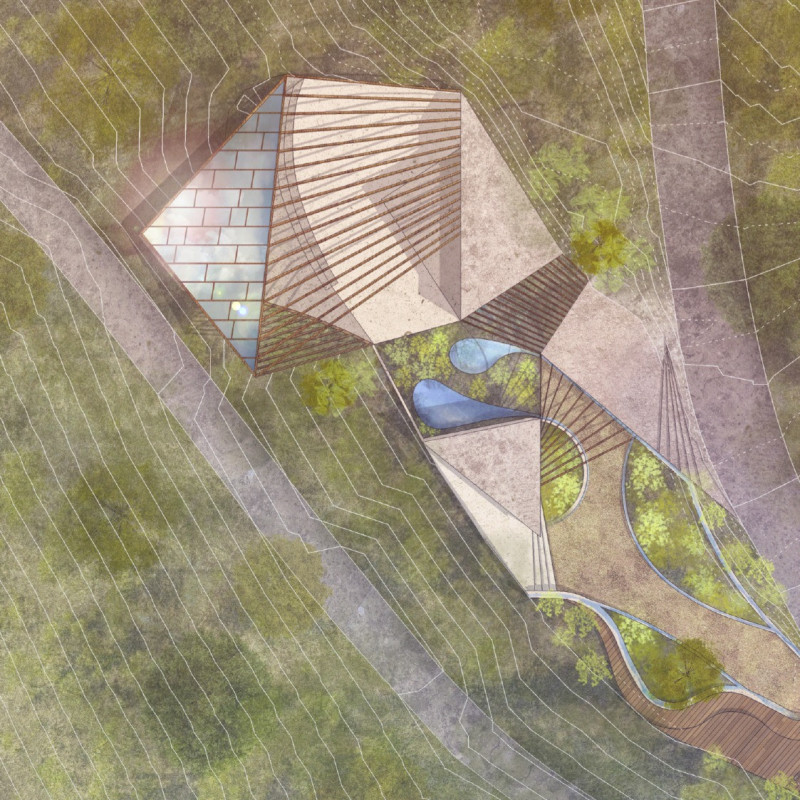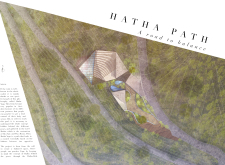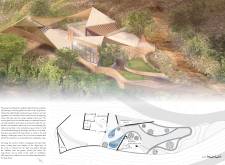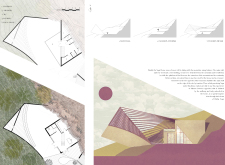5 key facts about this project
The project represents not just a physical space, but an experience deeply rooted in the philosophy of Hatha Yoga. By creating an environment that reflects the essence of balance between earth and sky, light and shadow, the architecture encourages users to immerse in the mindful practice of yoga while fostering a sense of community. The functional aspects of the project are meticulously planned to support various activities related to wellness, including yoga sessions, meditation practices, and informal gatherings.
One of the most significant aspects of the Hatha Path project is its layout and spatial organization. The design employs a series of connected pathways that guide visitors organically through the site, offering a seamless transition from the external environment to the internal spaces. These pathways are carefully integrated into the landscape, inviting exploration and interaction. The main yoga area is strategically positioned at the heart of the project, designed to be open and flexible to accommodate different practices and group sizes. This central space features large windows that frame views of the surrounding nature, enhancing the feeling of unity with the outdoors.
Additionally, there are dedicated zones for meditation, providing quieter spaces that enable deeper reflection. The incorporation of natural materials such as wood, stone, concrete, and glass further reinforces the idea of connection to nature. Wood is utilized in the structural framework and finishes, promoting sustainability while offering warmth. Natural stone elements add tactile quality to the exterior, while extensive glass surfaces establish transparency and lightness, effectively blurring the lines between inside and outside.
The architectural geometry of the building is another noteworthy feature. The roof lines exhibit a dynamic interplay of angles and heights, echoing the contours of the landscape. This thoughtful design approach not only enhances the aesthetic appeal but also serves practical functions, such as optimizing natural light access and promoting passive ventilation. The orientation of the main wall is aligned with natural markers, suggesting a deep respect for the environment and its intrinsic rhythms, encapsulating a sense of place and time.
Unique design approaches are evident throughout the project; the articulation of both external and internal spaces encourages active engagement with the elements. The selection of materials is intentional, focusing on local resources that resonate with the surrounding environment, reinforcing the project’s ethos of sustainability and mindfulness. Furthermore, the environmental considerations, such as rainwater harvesting systems integrated into the landscape, highlight the project’s commitment to ecological stewardship.
This architectural venture encourages visitors to explore the architectural plans, sections, and designs that have been meticulously crafted to enhance the user experience. The thoughtful integration of spaces allows individuals to immerse themselves fully in the principles of Hatha Yoga while fostering a harmonious connection with nature. For those looking to gain a deeper understanding of this architectural project, it is recommended to delve into the various architectural elements that define its character and functionality. The Hatha Path project stands as a testament to the possibilities of architecture when aligned with core ideas of wellness, balance, and environmental harmony.


























